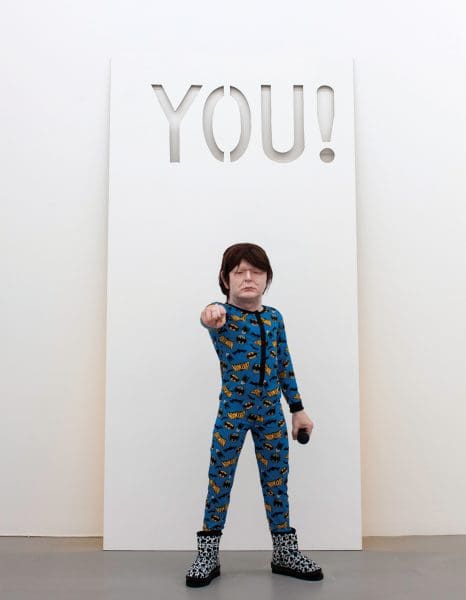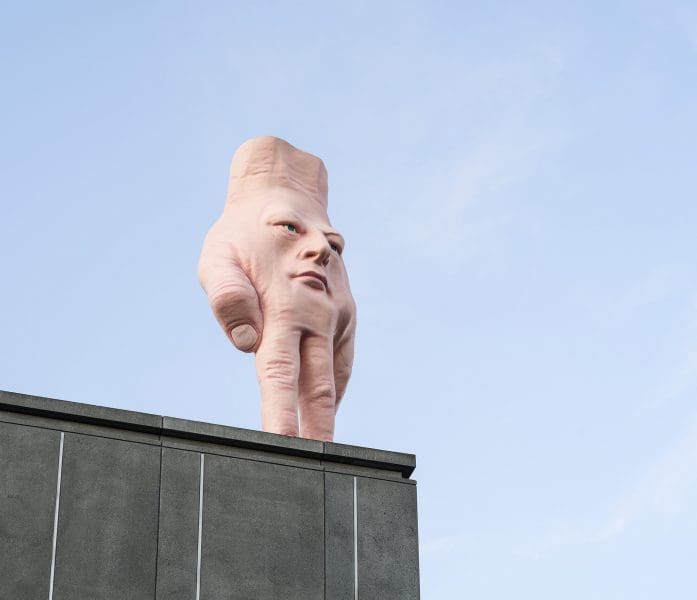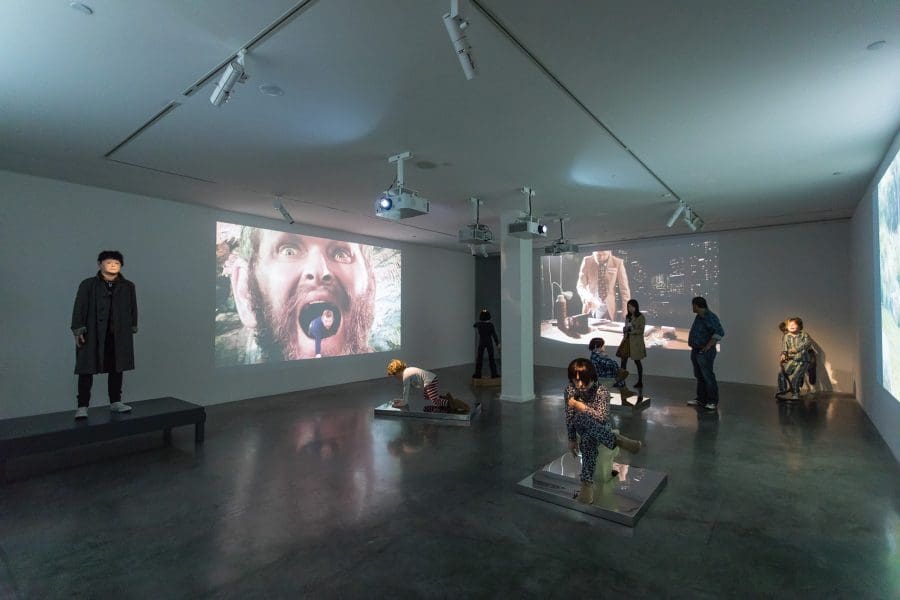
Piercing the veil
A new exhibition at Buxton Contemporary finds a rich complexity in the shadowy terrain between life and death.

RONNIE VAN HOUT: YOU! was part of a show called Stand Up, which looked at the position of the stand-up comedian in the late 50s and into the 1960s, when it was much more marginal; more abject. I was seeing it as a form of talking therapy, where someone stands up and talks to everyone else. The stand-up comedian was always an outsider; someone who was sort of ‘between’—between the audience and the world. It’s like they’re lying down, but they’re standing up—they’ve risen from the couch. The term ‘stand up’ is also a kind of directive.
It’s performance, so I was also interested in the stage. I was into the punk rock music scene when I was younger, which worked with the idea of taking away the stage. A lot of punk gigs were just on the floor, with the band on the same level as the audience, in a non-hierarchical situation. I’m interested in that in relationship to the performer’s position. In stand-up there’s an intimacy that’s created through the performance, which is different to theatre. You have to laugh. It’s not funny and it’s not a joke until someone laughs at it. My high school yearbook quote was: “The difference between people and animals is stand-up comedians.”

RONNIE VAN HOUT: BED/SIT is a meld of Robert Morris’s installation Hearing, 1972, and the British comedy show Hancock’s Half Hour. That was kind of the image I had—of a British sitcom set in a one room bedsit—of a lonely character on their own, and the failure of their existence. I was trying to create that kind of mood, which is a bit Beckettian—kind of funny, but equally, really depressing. I wanted something theatrical, that looked like a set; like something was going to happen.
The notion of the domestic is introduced by the doorway, which has a video showing in it. I based the proportions on the monolith in 2001: A Space Odyssey, 1968, which is a kind of a gateway in the film and operates as a door, and as a way through or threshold; you go through it to gain knowledge or to advance. In the film the monolith emits a loud sound, so I used a mixture of that and the sound of a power station for the soundtrack; the plinth is a big speaker. The two figures sitting opposite each other are another 2001 reference. Their mirroring is inspired by the scene where HAL, the computer who controls the spaceship, reads the lips of the two astronauts who are talking about him.

RONNIE VAN HOUT: This work is about remembering my teenage years and trying to locate the specific moment of deciding to become an artist. It was also that moment where I moved between two worlds; choosing art during a pretty bad phase of my life and making decisions about my future when I didn’t even know who I was. That’s why the portrait of me is kind of unformed. Similarly, in the video, the people reading the poems from my school yearbook serve to emphasise the fact that it’s all teen-angsty and emotional, although I wasn’t actually like that.
The work is about reflection and going back and thinking about points in time. It was also a nod to Mike Kelley’s show Day is Done, 2005. So mine’s, All Said All Done. Because, in the end, what does it all add up to?

RONNIE VAN HOUT: Quasi was created after the Christchurch earthquake. When the city’s gallery was reopening, they wanted something to go on the roof that would make people go, “What the hell’s that?” and that would point to the fact that the gallery was now open. In this sense, I call it signage, rather than art. It’s a kind of sign, but it’s also a Quasimodo-like character; a sort of ‘other’. So that’s another aspect of the work—the theme of the outsider and the rejected.
The launch of the work made the national news. Following that, the national newspaper held an online survey where they asked, “Do you like it or hate it?”, which gathered over 5,000 responses—mostly against. The gallery was happy because they thought that was a success and that it had achieved what they set out to do. A lot of people were going past, and then going into the gallery to make a complaint!

RONNIE VAN HOUT: For The National in 2017 I wanted to get together all the figures I could with all the videos and just put them in a room, to overwhelm in some ways, and to just see what would happen and what it amounts to. That was partly the whole point of doing all those figures with my head and hands. Rather than get sick of something and move on to something else, I thought, “I’m just going to continue doing this, let’s see what it does.” When you do more, does it add up to something else; does it change how the next things are read?
I particularly like the videos all playing at the same time—lots of sound, really overpowering. What happens when you put too many references and too many links into something; when it’s just too much, too over the top? It’s allowing all the little references and little connections to come together, which I think is interesting. The one theme I’ve had continuously is the idea of connection—what’s the gap and what happens in the space in-between.
The Floating Planes of Utrecht
Ronnie van Hout
STATION Gallery, Melbourne
Dates to be confirmed. Please check gallery website.
This article was originally published in the July/August 2021 print edition of Art Guide Australia.